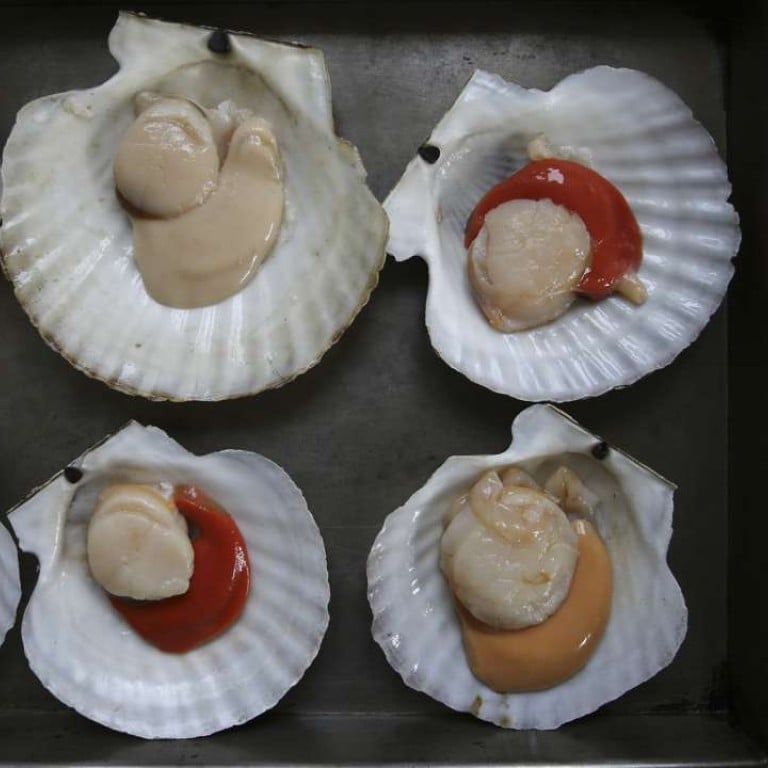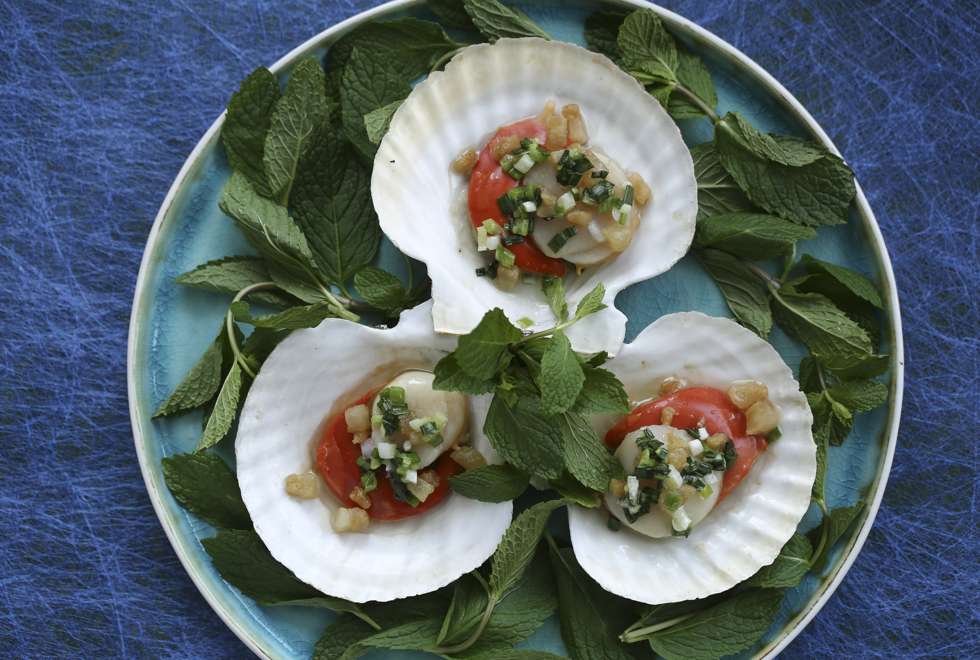
Susan Jung’s recipes for grilled scallops, and for roasted figs with ice cream
Susan tries to recreate two memorable dishes from her recent travels: a grilled scallop from the Princess d’Annam Resort & Spa, in Vietnam, and a dessert from Maggie Beer’s Farm Shop, in Australia
Whenever I travel, I keep my eyes (and palate) open to inspiration for dishes that are delicious, attractive and easy to prepare. Of course, when I attempt to cook the dishes in my own kitchen, they’re never exactly the same as the original – but they’re still good. Here are my takes on two dishes I came across recently.
Grilled scallops with pork fat cracklings and sizzled spring onion
This is my version of a fantastic dish I tasted at the Princess d’Annam Resort & Spa, in Vietnam’s Binh Thuan province. The cooks grilled the scallops on a large barbecue set up on the beach while we sat nearby at tables watching the waves. You can cook the scallops on the barbecue if you have it fired up for making other dishes, but I cook them under the oven grill.
Grilling the scallops is quick, but making the pork-fat crackling takes about 45 minutes, so I make a large quantity each time. If you can resist munching the crackling on its own, save it in the fridge or freezer for the next time you want to make this dish.
250 grams (or more) raw pork fat
12 fresh scallops in the shell, with body size about 4cm in diameter
40 grams spring onions
About 5ml fish sauce
Freshly ground black pepper
Fresh mint leaves, for serving

Cut the pork fat into 6mm squares and put them in a saucepan with about 45ml of water. Place the pan over a low flame and heat until the fat starts to melt. Continue to cook, at a very low simmer, stirring often, until all the fat has separated out from the pale golden crackling (the solid bits). This takes about 45 minutes. Use a fine strainer to lift the crackling from the fat and strain it on paper towels. Reserve the fat. Clean the scallops, removing the dark green/black parts but keeping the coral (which is orange for females and off-white for males). Detach the scallop from the shell. Save 12 of the prettiest shells for serving. Use paper towels to blot the shells and the scallops, then put the scallops back into their shells.
Cut the spring onions into 5mm lengths. Pour about 60ml of the rendered pork fat into a small pan and heat it over a medium flame. When the fat is hot, add the spring onion and stir until it’s wilted. Remove the pan from the heat.
Set the oven grill to high heat. Place the scallops in their shells on an oven tray that will hold them all in one layer (or cook them in batches). Pour the fish sauce into a small bowl and use a teaspoon to put just a few drops over each scallop. Spoon the spring onion over the scallops, dividing them evenly, then scatter with as much as you want of the fried pork crackling (don’t be tempted to use too many). Grind a little black pepper over each scallop, then slide the pan under the grill about 3cm from the heating elements. Cook for about two minutes for mi-cuit, or longer if you like them well done.
Scatter the mint leaves on four serving plates. Place three scallops on each plate then serve immediately.
Roasted figs with puff pastry, honeycomb and ice cream
This is my attempt at making a delicious dessert I ate at Maggie Beer’s Farm Shop, in Nuriootpa, South Australia. Beer and her daughter, Saskia, prepared what we thought was going to be a quick snack – a precursor to lunch at a nearby restaurant – for 10 of us. The snack turned into a feast that included sautéed rooster testicles (yes, really), chicken liver crostini and chicken cooked en croute. As a finale for this “quick snack”, Beer made this dessert, which we gobbled down just before running out the door for lunch.
8-12 figs
1 sheet puff pastry (preferably all-butter puff) thawed, if frozen
1 egg
Honey in the honeycomb
Vanilla ice cream
Preheat the oven to 220 degrees Celsius. Quarter the figs, lay them on a baking dish and drizzle lightly with honey. Bake for five minutes, or until they start to soften but are not mushy. Take them from the oven and cool to room temperature.
Whisk the egg with a pinch of salt and about 15ml of warm water. Lay the puff pastry sheet on a baking tray lined with parchment paper. Lightly brush the beaten egg over the puff pastry. Use the tines of a fork to press holes at 1cm intervals over the entire surface of the puff pastry sheet. Place the tray in the oven and immediately lower the heat to 200 degrees. Bake for 15 minutes, then turn the heat to 180 degrees and continue to bake until the puff pastry is medium brown, fragrant, firm to the touch, and slides around easily on the parchment paper (it shouldn’t stick).
Use a serrated knife to cut the pastry into eight rectangles. Top each rectangle with several fig pieces, then add a small chunk or two of honeycomb. Top with scoops of vanilla ice cream and serve immediately.


